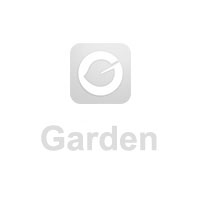

Edging is the final touch for every sort of garden, whether you're producing fruits, vegetables, herbs, or flowers. Annual and perennial flower beds will seem more polished and your mulch will remain in place if you add edging around them. It will also enhance the curb appeal of your property by adding character and charm.
The finest materials for edging garden beds are listed below.
paving stones
Concrete pavers are almost unbreakable. However, they are difficult to handle and time-consuming to install, so prepare for many days of laborious lifting and digging. Pavers may be used to create walkways or simply as bed edges.
Pros: endures long and looks fantastic
Cons: takes a long time to install
This organic edge, often known as "wattle," is ideal for English or rural gardens. In Europe, it is widely utilized.
Positives: Beautiful when used appropriately
Cons: Expensive for big areas and easily damaged
There are a variety of sizes, hues, and forms of rocks, and creeping flowers look stunning falling over them! Simply place pebbles along each bed's edge; for the most visual effect, use boulders that are at least the size of a softball. For possibilities, go to a nursery or garden shop.
Pros: endures forever
Cons: It takes time to assemble them attractively.
4.Brick
Bricks may be stacked upright or laid in a shallow trench with the broad side down. Getting everything level is the most challenging aspect. Use a line level on a string and a rubber mallet as a tip.
Pros: lasts indefinitely and is reasonably priced
Cons: Installation is labor-intensive
5.Poured Concrete You must first construct a form, then mix and pour concrete into the mold, thus this is normally not a DIY project for beginners. Because errors are difficult to correct, take into account hiring a professional.
Pros: has a long lifespan
Cons: Future years won't be as easy to change the planting bed's configuration.
Recycled Rubber Edging, No. 6
A few businesses currently produce pounded-in rubber edging. Since it's often manufactured from recycled tires, it's almost unbreakable.
Pros: lasts forever
Not attractive in formal or cottage gardens.
7. Landscape Wood
If you're skilled with a saw, using landscaping timbers as an edger will save you money. To stop decaying, they are often pressure-treated. The ground will need leveling and cutting as necessary.
Pros: Cost-effective and durable
Cons: Not suitable for use in making curving borders
8. Artistic Fence
It's really simple to line the perimeter of a garden with little fence parts. You may choose from a wide range of sizes and varieties, including those made of metal, wood, and plastic, to match the design of your garden.
Pros: Simple to locate
Cons: Easily harmed and unable to secure mulch.
Garden edging installation requires some work as well. Gather your equipment first, including gardening gloves, a kneeler pad, an edge shovel, a garden spade, and a rake.
The finest materials for edging garden beds are listed below.
Concrete pavers are almost unbreakable. However, they are difficult to handle and time-consuming to install, so prepare for many days of laborious lifting and digging. Pavers may be used to create walkways or simply as bed edges.
Pros: endures long and looks fantastic
Cons: takes a long time to install
2. Weaved Willow
This organic edge, often known as "wattle," is ideal for English or rural gardens. In Europe, it is widely utilized.
Positives: Beautiful when used appropriately
Cons: Expensive for big areas and easily damaged
3. Pure Rock
There are a variety of sizes, hues, and forms of rocks, and creeping flowers look stunning falling over them! Simply place pebbles along each bed's edge; for the most visual effect, use boulders that are at least the size of a softball. For possibilities, go to a nursery or garden shop.
Pros: endures forever
Cons: It takes time to assemble them attractively.
Bricks may be stacked upright or laid in a shallow trench with the broad side down. Getting everything level is the most challenging aspect. Use a line level on a string and a rubber mallet as a tip.
Pros: lasts indefinitely and is reasonably priced
Cons: Installation is labor-intensive
5.Poured Concrete You must first construct a form, then mix and pour concrete into the mold, thus this is normally not a DIY project for beginners. Because errors are difficult to correct, take into account hiring a professional.
Pros: has a long lifespan
Cons: Future years won't be as easy to change the planting bed's configuration.
Recycled Rubber Edging, No. 6
A few businesses currently produce pounded-in rubber edging. Since it's often manufactured from recycled tires, it's almost unbreakable.
Pros: lasts forever
Not attractive in formal or cottage gardens.
7. Landscape Wood
If you're skilled with a saw, using landscaping timbers as an edger will save you money. To stop decaying, they are often pressure-treated. The ground will need leveling and cutting as necessary.
Pros: Cost-effective and durable
Cons: Not suitable for use in making curving borders
8. Artistic Fence
It's really simple to line the perimeter of a garden with little fence parts. You may choose from a wide range of sizes and varieties, including those made of metal, wood, and plastic, to match the design of your garden.
Pros: Simple to locate
Cons: Easily harmed and unable to secure mulch.
Article
All 1 Comments


sososo
2022年07月18日
0
Plants really need careful care.














